It's the symbol par excellence of the capital of Tuscany, a monument to aesthetic beauty and human genius. The Cathedral of Santa Maria del Fiore, known as the Duomo of Florence, represents much more than a beautiful religious building well preserved over the centuries. Indeed, it seems to encapsulate within itself all the spirit of the Renaissance, keeping intact for visitors the timeless charm of an era that revolutionised the way of life of mankind.
When its construction was completed in 1436, it was the largest church in the world. It can hold up to thirty thousand people and attracts hundreds of thousands of tourists every year, fascinated by its masterpieces of art and architecture. If you think you would like to visit the cathedral of Florence during your next stay in Tuscany, Visit Italy recommends you to document yourself in time in order to enjoy the experience to the fullest, avoiding long waits and choosing the right service to take advantage of together with your travelling companions, such as the use of the city's Florence pass.
Follow us on our journey to discover the cathedral of Florence: you will be so thrilled by the wealth of colours, symbols and artistic treasures that you will want to learn more about the other monuments that surround it, in this square that seems magically preserved just as it appeared to the eyes of its Renaissance inhabitants.
Discover how to visit Florence with a pass full of comfort
Visiting the Florence Cathedral: the wonders of the Italian Renaissance
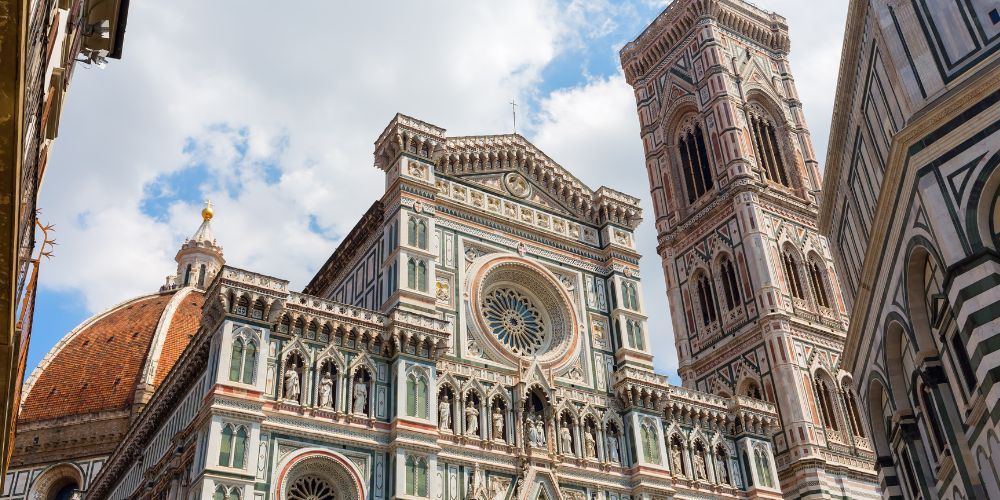
Once you stand in front of the grandeur of this jewel of Italian architecture, you will feel as if you are retracing history at every new step. The main façade is neo-Gothic in style with white, green and black marble, and was only completed in 1871 after a series of temporary renovations over the centuries. The themes depicted in the sculptures on the façade address the Virgin Mary, salvation and Christian civilisation. Precisely because of the perfect blend of the religious and political spheres of the city at the time, we find the presence of busts of 'probi vires', i.e. illustrious men who positively influenced the flourishing of Florence throughout its history.
Tradition has it that the cathedral's name 'Santa Maria del Fiore' is linked to the fleur-de-lis symbol in Florence's coat of arms and to the city's name itself: 'Florentia', that is, 'the city that is to flourish'. This name was chosen by the ancient Romans during the founding of Florence around 59 B.C. in spring, when the pagan rites of the 'flower games' dedicated to the goddess Flora were celebrated. Almost like a foretold destiny, Florence and its cathedral dedicated to the virgin of flowers experienced an undisputed flourishing of its life, culture and economy for several centuries.
Another outstanding feature is the cathedral's bell tower, 84 metres high and built more as a decorative element than a functional one. This work bears the signature of the great painter and architect Giotto, who began the project in 1334 and which was continued by Andrea Pisano after his death. Even on the bell tower, the symbolism of the decorations have precise meanings: the concepts of universal order and redemption are expressed in the reliefs depicting the creation of mankind, the planets that regulate his existence, as well as the virtues, arts and sacraments that guide and strengthen humanity.
The interior of the cathedral of Florence is a veritable treasure chest containing art treasures of inestimable value: there are more than 750 works inside, covering more than seven hundred years of history. Of particular importance is the collection of Florentine monumental sculptures, the largest in the world. The preservation of all these works of art is the task of the Museo dell'Opera di Santa Maria del Fiore, which sees to the restoration and proper presentation of this immense heritage to visitors from all over the world.
Visit Florence Cathedral and skip the lineBrunelleschi's dome and its legendary construction
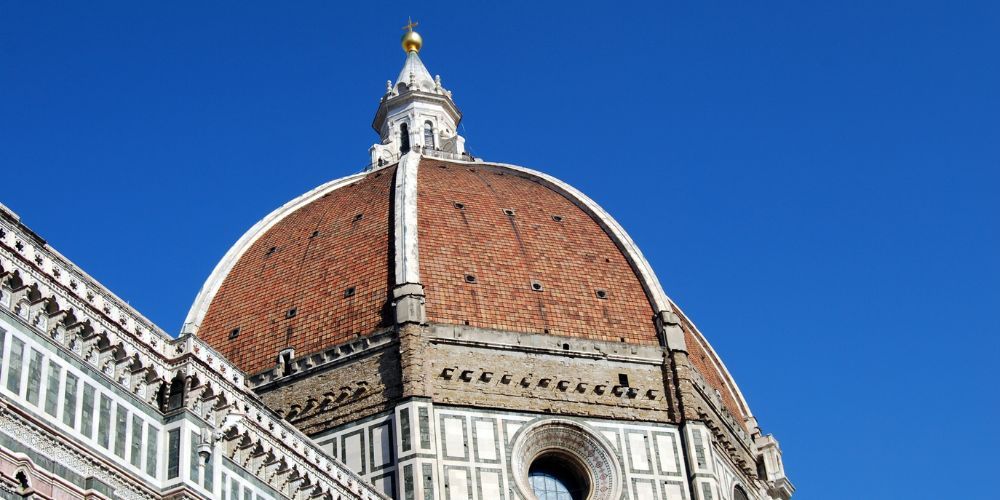
When planning your trip to Tuscany you'll decide when to visit the Dome of Florence, remember that an extremely important part of its history has to do with the birth of the construction project of its immense dome, which is still the largest masonry dome in the world today. It is therefore worth exploring the almost legendary events that led Filippo Brunelleschi to the completion of one of the most extraordinary architectural challenges of ancient times.
Filippo Brunelleschi was a goldsmith and sculptor, having never trained as an architect. The design of the cathedral's new dome was therefore the opportunity of a lifetime to demonstrate his skills. He studied the problem at length, eventually proposing a very daring solution, based on methods that experts still do not fully understand today. In those days, most domes were built in a semi-circular shape, but the city authorities imposed the model of an eight-segment dome, which would be taller and more imposing in this way; according to the directives, there had to be no central support system to hold it up during construction, and it had to rest on an imperfect octagonal base.
So Brunelleschi made a difference that solved the problem in a completely new way: he designed two concentric structures held together by huge vertical brick arches with horizontal wooden and stone rings. In this way the rings, like the rims of a barrel, would prevent the dome from yielding to lateral thrusts. In order for the dome to hold up without an external support, Brunelleschi laid the bricks in a herringbone pattern so that they would spiral up to the top of the dome itself.
To bring his masterpiece to life, Brunelleschi thus combined revolutionary design, advanced technology and a certain propensity for risk in solving the most critical issues. It is precisely in these aspects that we grasp the essence of a mind extremely capable of adapting to the evolution of a project of titanic dimensions, which perhaps could have been produced by the incredible human, cultural and artistic ferment that was experienced in Florence during the Renaissance period.
Visit Brunelleschi's dome with reserved admissionIngresso al Duomo di Firenze: biglietti e visite guidate

Let's start with good news: entry to the Cathedral of Santa Maria del Fiore is always free. If you would like to visit the museum areas, the dome and other monuments, you can purchase dedicated tickets.
Obviously, because of the free entrance, it is very likely that long queues will be created outside: usually the wait is not very long and the line flows quite quickly. For this reason, our first advice is to leave early in the morning to anticipate the arrival of the mass of people, waiting near the ticket office about half an hour before opening time: from 10 a.m. Monday to Friday and from 1.30 p.m. on Sundays.
To visit the cathedral of Florence, always consider spending at least three to five hours there, depending on what you choose to see. If your intention is to visit the paid areas of the Cathedral, such as the Dome, we recommend that you purchase a priority ticket to avoid very long queues. It is also important to remember that some areas have certain restrictions and recommendations for different categories of users: for example, climbing the Dome is not recommended for those who suffer from heart problems, claustrophobia, vertigo, or difficulty walking.
Visit Italy allows you to purchase a guided walking tour of Florence Cathedral directly on our portal, allowing you to enjoy a quality tourist experience thanks to the professionalism of an expert guide who will accompany you to discover the wonders of the Cathedral. With this ticket you will be able to skip the long queues through a dedicated entrance and immediately begin the tour, which lasts approximately 30 minutes. The guide will be available in Italian, English, French and Spanish, for groups of up to 25 people. The meeting point with the guide will be in front of the Museo della Misericordia in Piazza del Duomo no. 15, in front of the museum door. The tour will start at 1.45 p.m. and the ticket costs €39 for adults and €19.50 for children aged 3 to 10. Up to 24 hours before the visit you can ask to reschedule if you are unable to attend. According to the rules of the Cathedral it is recommended not to wear clothes with covered shoulders, short skirts or shorts.
With Visit Italy you can also book a ticket to visit Brunelleschi's Dome with reserved entrance and priority access. This will be the perfect opportunity to experience the thrill of observing the great artist's architectural work up close, enjoying the view from above and admiring the magnificence of Giorgio Vasari's frescoes. This ticket also includes entrance to Giotto's Bell Tower, the Museo dell'Opera del Duomo, the Baptistery and the ancient Basilica of Santa Reparata. The ticket is valid for up to 72 hours after validation and costs €45 for adults and €25 for children aged 7 to 14.
If you want to visit the Florence Cathedral completely independently and without an expert to accompany you, with Visit Italy you can purchase a ticket to access the audio guides of the Cathedral and the other monuments in Piazza del Duomo. The ticket costs 7.00€. This will allow you to spend as much time as you need to stroll in peace and quietly pause to admire all the wonderful artistic expressions of these enchanting places. Audio guides are available in the following languages: Italian, English, German, French, Spanish, Japanese, Russian, Chinese, and Korean.
If you don't have a lot of time and would like to see the best of the city of Florence using a single admission ticket, you might opt for the Florence Pass, Visit Italy's offer that gives you access to the Duomo's Brunelleschi Dome, the Uffizi Gallery and the Galleria dell'Accademia. This way you will visit with priority access both the architectural wonders of the Cathedral and two of the city's most iconic museums to admire such timeless masterpieces as Michelangelo's David, Botticelli's Birth of Venus or Caravaggio's Medusa. Included in the offer is the Vox audio guide app and a 10 percent discount on all other Florence attractions.
Book your guided tour of Florence CathedralThe works of art inside the Florence Cathedral
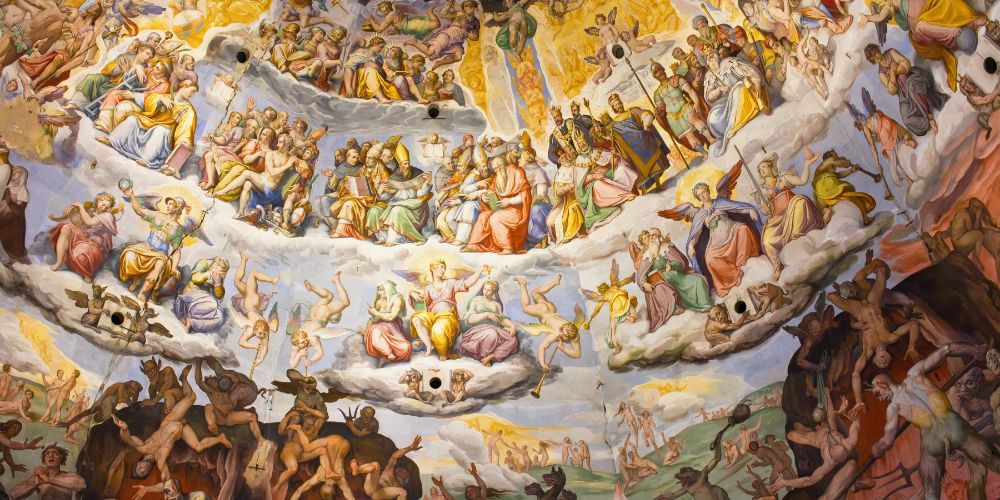
Once you have chosen how and when to visit the cathedral of Florence, you will finally be able to enjoy the magnificent artistic heritage enclosed in this masterpiece of human ingenuity and place of excellence of Christianity in Italy. Among all the artistic attractions, here are some of the main works you can find.
Giorgio Vasari's frescoes, painted in the 16th century by the great painter from Arezzo, decorate the vault of the dome of Florence Cathedral, depicting moments such as the resurrection of Christ, the ascent to Calvary and the assumption of the Virgin. Vasari painted this monumental pictorial complex using extremely vivid colours and providing a great sense of movement to the entire work.
The extraordinary depictions of the dome include a series of seven hundred figures, including angels, souls, religious figures, souls of the damned, monsters, portraits of characters and even animals, spread over an immense area of 3,600 square metres.
It is also fascinating to discover the great complexity of the themes dealt with in each of the sails of the dome. Starting from the top, we find the angelic choirs presenting the instruments of the Passion; further down are the hosts of saints and blessed, then the triad of the gifts of the Holy Spirit, the Virtues and the Beatitudes. At the lowest level of all we find the infernal level, each of whose sails depicts a vice or mortal sin.
On the central sail we find Lucifer condemned before Christ the judge. Nearby we also find the figures of Adam and Eve and the saints of Florence, playing the role of intercessors between the earthly world and the afterlife. Very interesting is also the female figure symbolising the Church, stripping itself of its earthly characteristics and power to triumph towards the eternal.
On your visit to the Florence Cathedral, following the left aisle, you will come across one of the most iconic paintings of the Supreme Poet: "Dante with the Divine Comedy" is a 1465 canvas painting by Domenico di Michelino, which depicts Dante dressed in red holding his literary masterpiece and behind him the realms of Hell, Purgatory and Paradise, as well as a view of Florence on the right where the cathedral itself, the Bargello tower and the Palazzo dei Priori can be seen. This work is part of a series celebrating the most illustrious Florentines, and observing it up close will certainly make you perceive the cultural and literary value of the Divine Comedy and its legendary author.
As you walk along the aisles of the Cathedral of Santa Maria del Fiore, remember to point your eyes upwards to admire the extraordinary stained glass windows, one of the most beautiful examples in the world among Gothic churches. Here you can find the largest number of original antique stained glass windows in Italy, 44 out of 55 that date back to the 15th century and whose designs were created by excellent artists such as Donatello, Paolo Uccello and Lorenzo Ghiberti.
A curiosity not to be missed is the clock on the counter façade of the cathedral of Florence, painted by Paolo Uccello in 1443. It is a liturgical clock that has a very special feature: the dial is divided into 24 parts instead of 12, while the hours are arranged counterclockwise. The reason can be traced back to the so-called Hora Italica, a subdivision of the day according to the seasons, where the hours start counting from sunset. In ancient times, sundials were used to measure time, following the sun's shadow, which precisely follows a counterclockwise direction.
How to get to Florence Cathedral
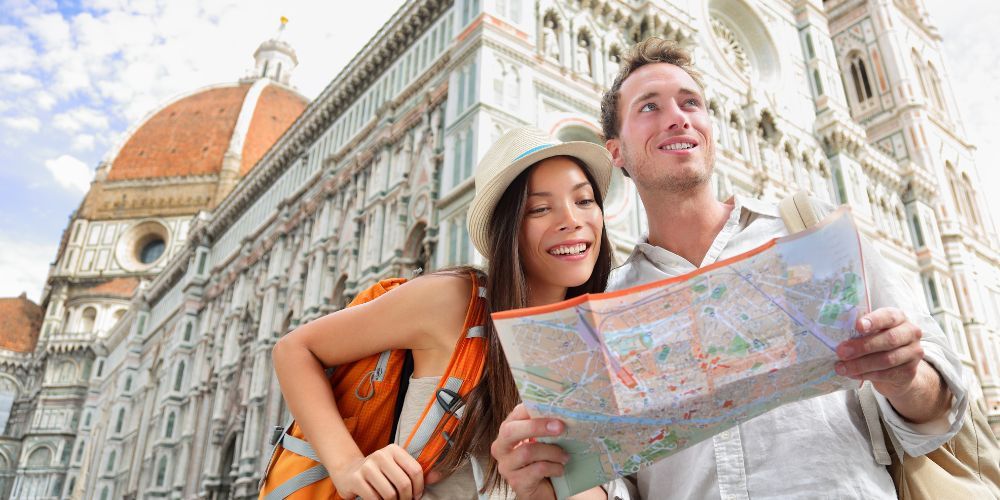
In order to best organise your visit to the Cathedral of Santa Maria del Fiore, you should also consider how to get to Florence's Piazza del Duomo. The city has an extensive and well-organised public transport network, so all you need to do is find the best solution closest to your starting point.
The city buses in Florence are the easiest means of transport to use. You can buy a day pass that is valid for the whole day or choose single tickets to reach the Duomo by asking for information at kiosks, railway stations or bars in the city. Tickets are usually priced at €1.20 and are valid for 90 minutes after purchase. All you have to do is take a bus line to the 'Condotta' stop and then walk to the Cathedral. Duomo di Firenze tickets only include transport if specifically stated.
Another way to visit Florence and its attractions using transportation is choosing Visit Italy's tour bus of the hop-on hop-off circuit, which allows you to travel comfortably through the city and stop at 44 must-see places in the historic center. Buses are equipped with audio guides in eight languages, the dedicated Sightseeing Experience app and air conditioning for maximum comfort. Ticket prices start at €23 for adults and €12.00 for children, varying according to the number of hours chosen for its use.
If you choose the train, the Santa Maria Novella train station is only 750 metres from Piazza del Duomo, which you can walk to in just ten minutes. Crossing the station square and taking via Panzani, you will easily reach Piazza San Giovanni, where the famous Baptistery is located and behind which is the Cathedral.
If you are already in the centre of Florence, it will be easy for you to walk to Florence Cathedral, which is located within the pedestrian zone. You can take several streets in the surrounding area, but usually the shortest route starts from via de' Calzaiuoli, which will take you straight to the cathedral without fear of making a mistake. Also consider renting a bicycle to get around the centre freely, which is very popular with the people of Florence.
Should you arrive by car from outside the city, you can take advantage of several public car parks in the historical centre. There are some very close to the centre, such as in Piazza del Duomo and Piazza San Marco.
Book the tour bus and see the best of FlorenceAbout the author
Written on 20/02/2023

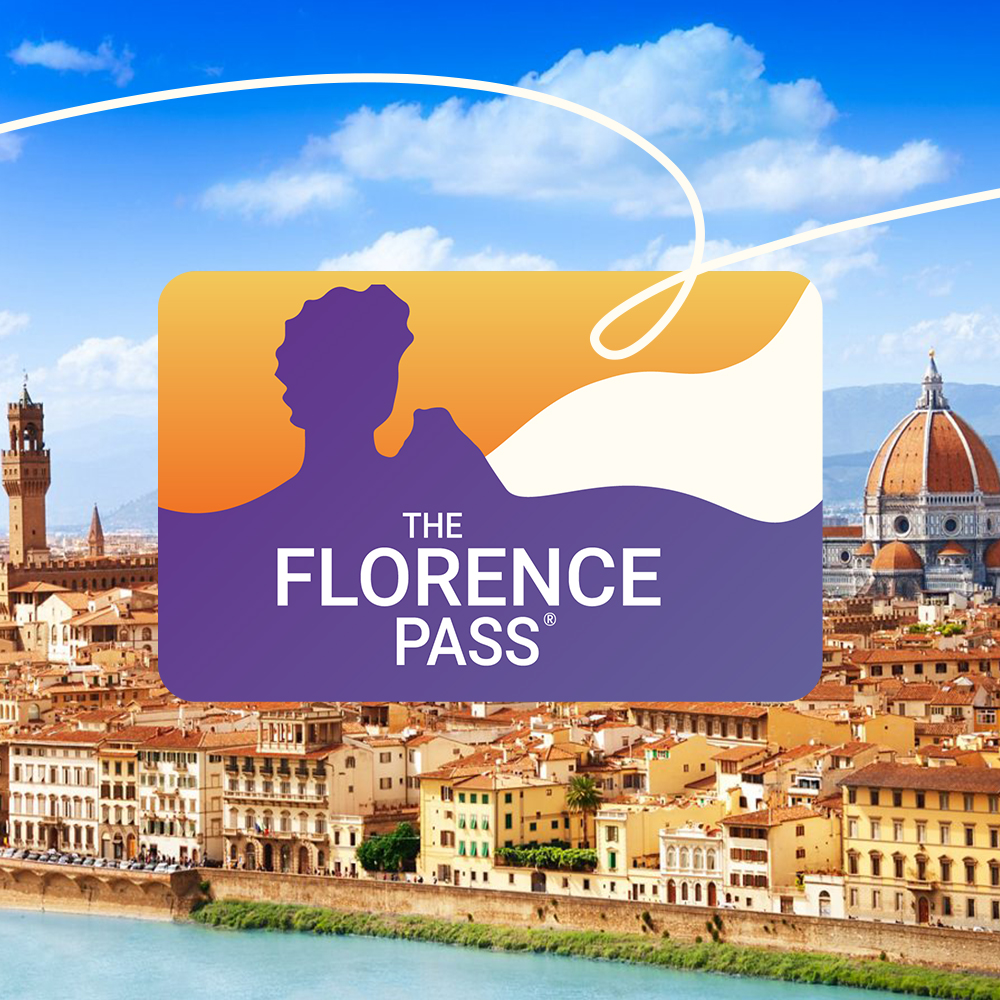
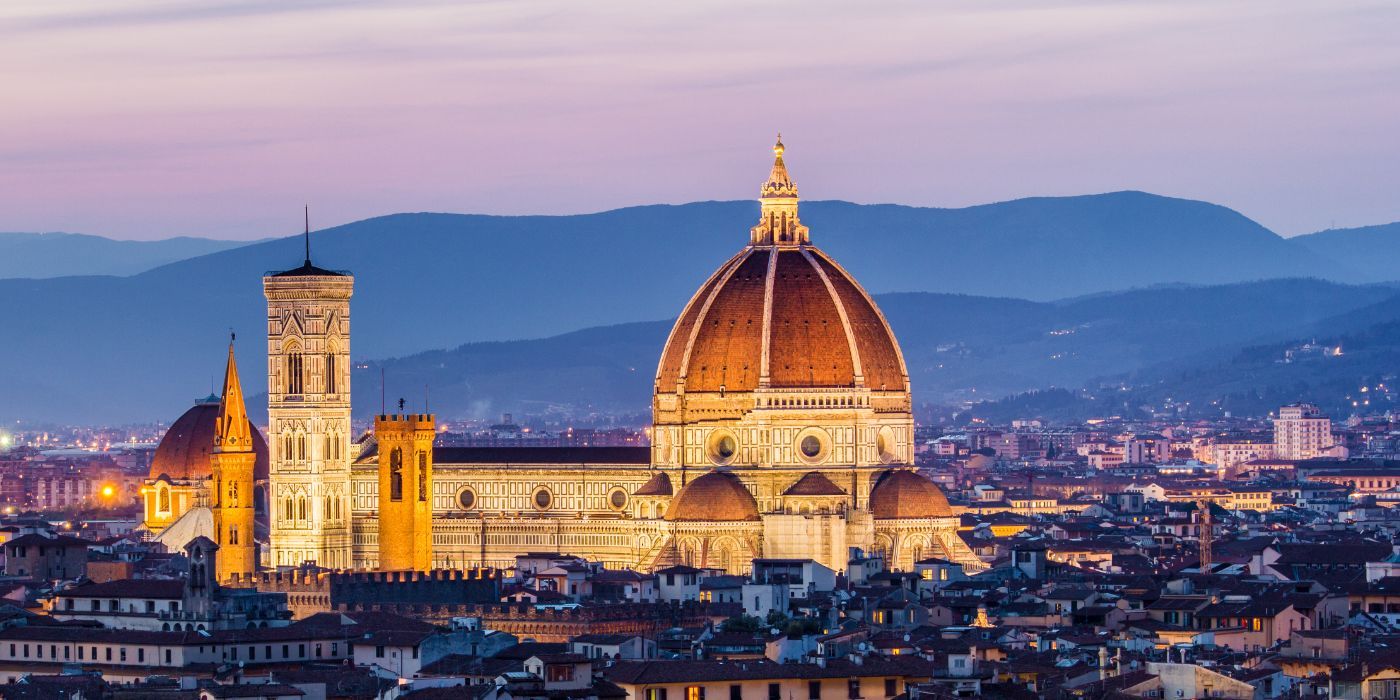

Francesco Vinci
Get ready for a great journey through Renaissance Italy: visiting the Duomo in Florence is an experience not to be missed. Let's discover its wonders.